Traveling with a pet, it is always a great adventure, but it can also bring challenges, especially when it comes to pets on long trips. As pet owners know, it is the dynamics of a long-term trip with your pet, it involves not only the logistics of the trip, but also for the comfort and well-being of your pet. Even though everyone would love to bring our furry friends for the adventure, and the sickness can be a common problem, and that it is important to adopt a number of strategies are most effective.
Summary of the Content on
In this article, I'm going to share with you a series of tips and techniques are proven to help with getting your pets on long trips, and to avoid those with motion sickness discomfort. My goal is to make sure that you and your pet to enjoy each and every moment of the journey, together with safety, and comfort.
Why did The presidents-Elect training seminar on Long road Trips to Feel Sick?
Before we talk about solutions, it's important to understand the reason for the sickness. Just like humans, animals can get sick because of the constant movement of the vehicle. This limitation occurs because the brain of the animal to receive mixed signals. The balance of the sensory, in that it is responsible for sending the information about the position and movement of the body, it is at odds with what the animal does, which can lead to nausea, excessive salivation, and even vomiting.
This is the kind of sickness that is called “motion sickness”, and it can occur in dogs in the back. They are most common when an animal is placed in a vehicle, and you can't see the road or the horizon, which makes the visual system, and the system of checks and balances in the agreement.
In addition, stress also plays an important role in the sickness. The fear or anxiety of your pet, as it is in a closed environment, and the move is likely to intensify the symptoms of nausea. For this reason, understanding the causes can help you to adopt the correct strategies to alleviate the discomfort.
How to Acclimate Your Pet to Travel, in Long
1. Start Out With Short Trips
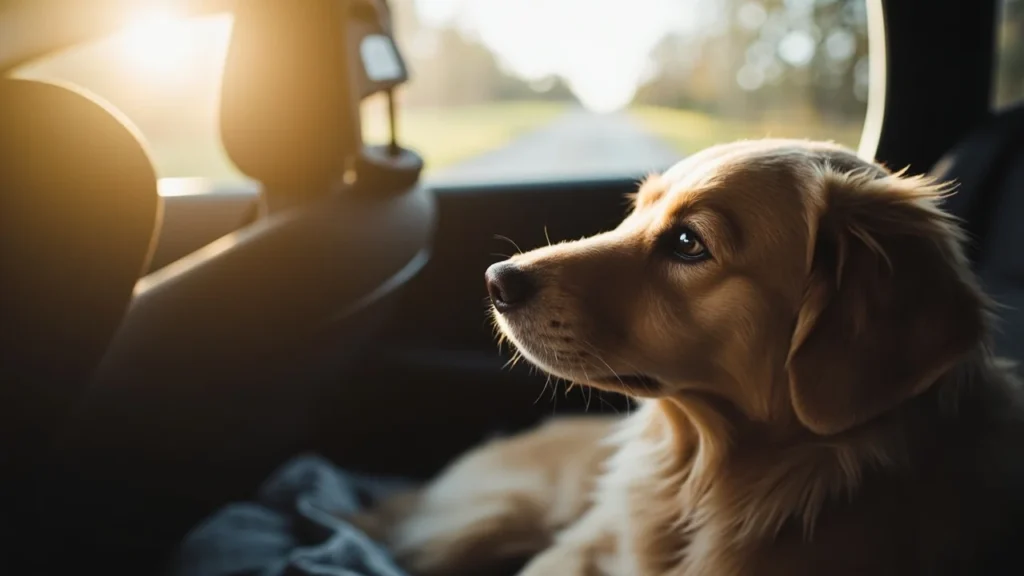
The first rule when it comes to accustom your pet to travel long is your patience. Never wait for your pet to adjust to the long trails right off the bat. The key to a successful transition is to start with short trips, and gradually increase the distance. This will allow your pet to become familiar with the feeling of being in a moving vehicle, without being overwhelmed.
Some practical examples:
- A trip to the vet: If your pet goes to the vet, it can also be a great place to start. The place is family-friendly, and it reduces the stress, and the journey is a short one, the one that does not overload your pet with too much time on the inside of the car.
- Trip to the park If possible, start out by taking your pet for walks in the local parks, or other areas close by. A journey of a 20-to 30-minutes, this is a good place to start, as it allows for your pet to get used to the motion of the vehicle, without it being an experience that is too long.
- Visits to friends or family If you have friends or family members with whom you might visit all the time, take advantage of these times to put your pet on short trips. It can not only begin to associate the drive to be a good thing as it will also be more comfortable over longer distances.
Consistency is the key. Do these trips with the frequency that your pet will understand that being in a car or a shuttle is a part of your daily routine.
2. Make your Car Comfortable
Nothing is worse than a long road trip in an uncomfortable environment. Imagine how you would feel when we travel for hours in a car is tight, with no room to move or to relax and unwind. In order for your pet to have a more peaceful, it is vital to ensure that the car is safe and comfortable. Comfort is essential, especially for the pets on long trips.
Tips for making the drive more comfortable:
- The Use of a carrier to suit: If your pet is small, it is a carrier of the trip, a suitable one of the best ways to ensure the safety and security of it. In addition to being safe, secure, carrier also provides a more comfortable ride, as your pet will be confined to a space where they feel safer and more secure.
- Seat belt for pets - If your pet is large, then it is advisable to use a safety harness for animals. This will help to keep him safe while he still has the freedom to move around quite a bit during the trip. There are harnesses, and leashes that are restricted to the bench, allowing your pet feel at ease, and secure.
- Avoid the crowds: Never travel with your pet, along with a lot of people, or other animals. This can lead to stress and increase the feeling of discomfort. In a quiet environment, it is vital for a successful trip.
- To adjust the temperature of your car: Make sure that the temperature of the vehicle is comfortable for your pet. Don't let the car too hot or too cold. Use your air conditioning sparingly, and make adjustments as needed.
Also, keep in mind that it may play an important role. Sounds of the calm, or gentle tunes can help you to relax your pet and relieve stress during the trip.
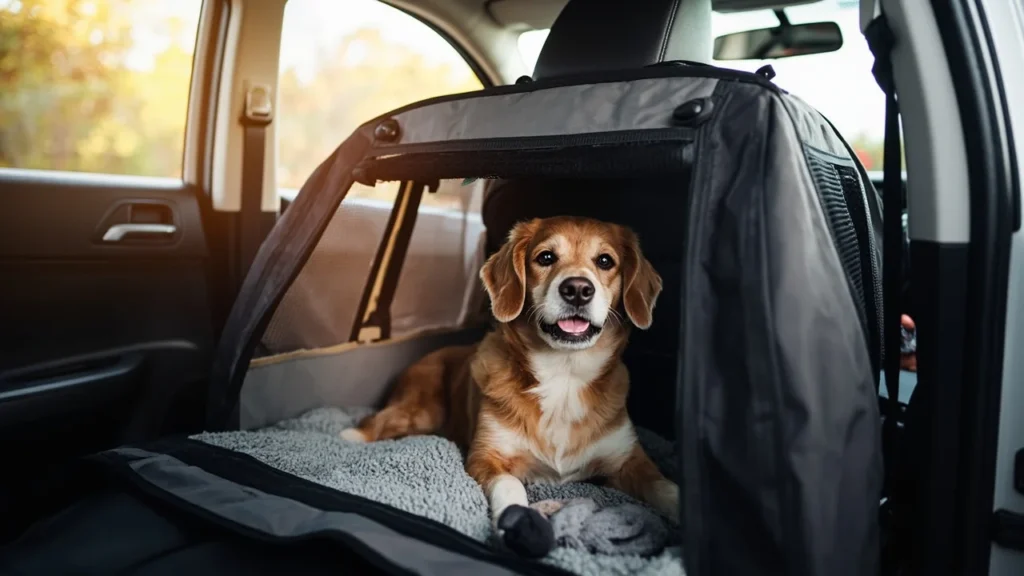
3. Feed Your Pet the Proper Way
Many of the owners of the pets make the mistake of feeding their animals with a large meal before a long trip, thinking that it will get hungry along the way. However, this can be a mistake. Feed your pet with a heavy meal before you travel, can result in discomfort, uneasiness and even nausea.
Read more: Tips for Dating a Pet-Friendly in the City: How to Join and to take Advantage of
Dietary strategies:
- Avoid eating a heavy meal: You can give your pet a light meal 3-4 hours before the trip. This will give you time to digest it before they get in the car. Heavy foods, especially those high in fat or protein, it can increase the chance of motion sickness.
- Opt for smaller meals, and frequently asked questions: If you are traveling for a long time, try to offer smaller meals during the route, preferably in the food that your pet is used to eating. To avoid any drastic changes in your diet while on the road, since this may affect you even more in the digestive system of your pet.
- Healthy snacks: If your pet is hungry, during the journey, to provide healthy snacks and a light. Cookies are specific to your pets, or pieces of fruit, such as apples or bananas-it can be a good option.
- Water is essential to: Hydration is very important, so even though your pet may not be very hungry, be sure to give the water on a regular basis. This will help to keep you hydrated and it will also relieve some of the symptoms of motion sickness.
The travel is too long, it's crucial that you plan your meals ahead of time. To make a stop on a scheduled, so that your pet has had time to rest and to eat, and if you have to.
4. To provide Breaks During the Journey
One of the most important things that you can do in order to ensure the comfort and convenience of your pet for a long trip is to bring the breaks on a regular basis. Whether you are traveling for several hours, it is essential that you make pit stops for your pet to stretch out, to make your needs and even take it to a glass of water.
How to plan your rest breaks:
- Breaks every 2 hours If you can, take a break for 10 to 15 minutes every 2 hours. This allows your pet to breathe, relax, and can decrease the risk of stress and motion sickness.
- The area is safe for walking During the downtime, always select a safe place for your pet to walk or go for a walk. Make sure that the area is quiet and distraction-free, so your pet can relax properly.
- Take care of your hygiene: During downtime, take the time to check if your pet is comfortable with it, if it needs a little bit of water, or the carrier, the seat belt will need to be adjusted.
Pauses are important-not only for the health of your pet, but also for the emotional well-being of it. Long road trips can be stressful and taking the time to rest, you will help your friend to get better.
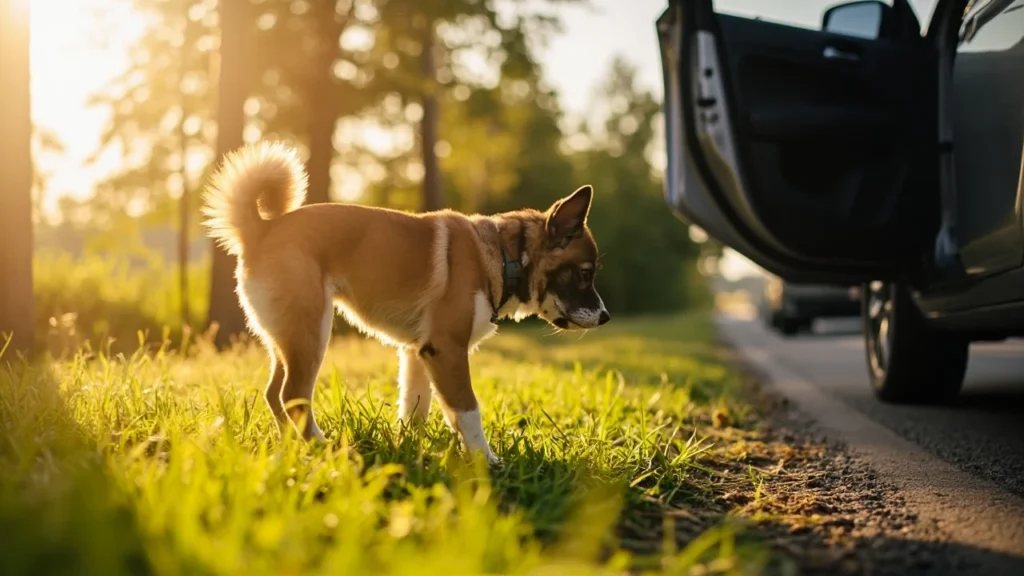
5. Consider the Use of the Product for the Relief of Nausea
If your pet is still showing symptoms of the sickness, after trying all the tips and tricks to earlier, there are products that can help alleviate that discomfort. It is always important to consult with your veterinarian prior to using any type of medication or supplement to motion sickness. This is especially important for the pets on long tripswhen the symptoms intensify.
Recommended products:
- Medicines for motion sickness: There are drugs sold without a prescription, which are specific for cats and dogs, which can help to reduce or prevent the symptoms of motion sickness. Your veterinarian can advise you on your medication is appropriate.
- All natural herbs and aromatherapy: Some of the products on the basis of the herbs can help relax your pet and reduce the symptoms of motion sickness. Aromatherapy, such as lavender essential oils, it can also be very effective in keeping your pet calm during the trip.
- Specific foods for nausea: There are also snacks and food that is formulated to aid in digestion and relieve nausea.
Consulting with your veterinarian, you can find the best solution for you of your pet, making sure that they feel comfortable and safe throughout the entire trip.
6. Please bring Items that are Familiar To your Pet
To bring objects that are familiar, of the house can make a huge difference in the emotional comfort of your pet during the trip. These items can help reduce stress and provide a sense of safety and security.
What to bring:
- Toys, plush toys: If your pet has a favorite toy, and take it on the road trip. Toys in the family can help your friend to distract yourself, and relax.
- Blankets, or throws: Bring a blanket or blanket, the smell of your home, you can make your pet feel more secure and comfortable throughout their journey.
These can be simple, but it can have a significant impact on the emotional well-being of your pet. In addition to this, they also help to create a mood that reminds you of your home, making your commute less stressful.
Traveling with your pet can be an enjoyable experience, and quiet, and if you follow the correct strategies. Start out with short trips, to keep the environment comfortable feeding your pet properly, taking regular breaks and use of the products, to the relief of the sick, are all effective strategies to ensure a trip without any stress.
Let's not forget that each and every pet is unique, and it's important to be aware of the specific needs of your pet. With patience and love, as well as the strategies to be right, to be you and your pet will be able to enjoy the many journeys together, and creating some incredible memories.
The Main Points Discussed Were:
- How do you start to get used to your pet's travel, the short before the feature films.
- The importance of a safe and comfortable environment in the car.
- How to feed your pet properly, both before and during your trip.
- The importance of regular breaks during the trip.
- Products that may help alleviate the symptoms of motion sickness.
- How to prepare for pets on long trips to train short-term basis.
Faq
1. My pet got sick while on the road, what do you do? You can get them to get used for short trips, to avoid feeding them with a big meal before you go and consult a veterinarian for specific products, so sick.
2. How far in advance of the trip, I have to feed my pet? It's recommended to take your meals to your pet for about 3 to 4 hours before your trip to avoid an upset stomach.
3. How can I ensure that my pet does not get stressed out on the road? Light weight items are familiar with, such as toys and blankets, and take regular breaks to stretch and relax.
4. Is it safe to use the medication for motion sickness in your pets? Yes, yes, but always check with your vet before you use any other medicines or supplements.

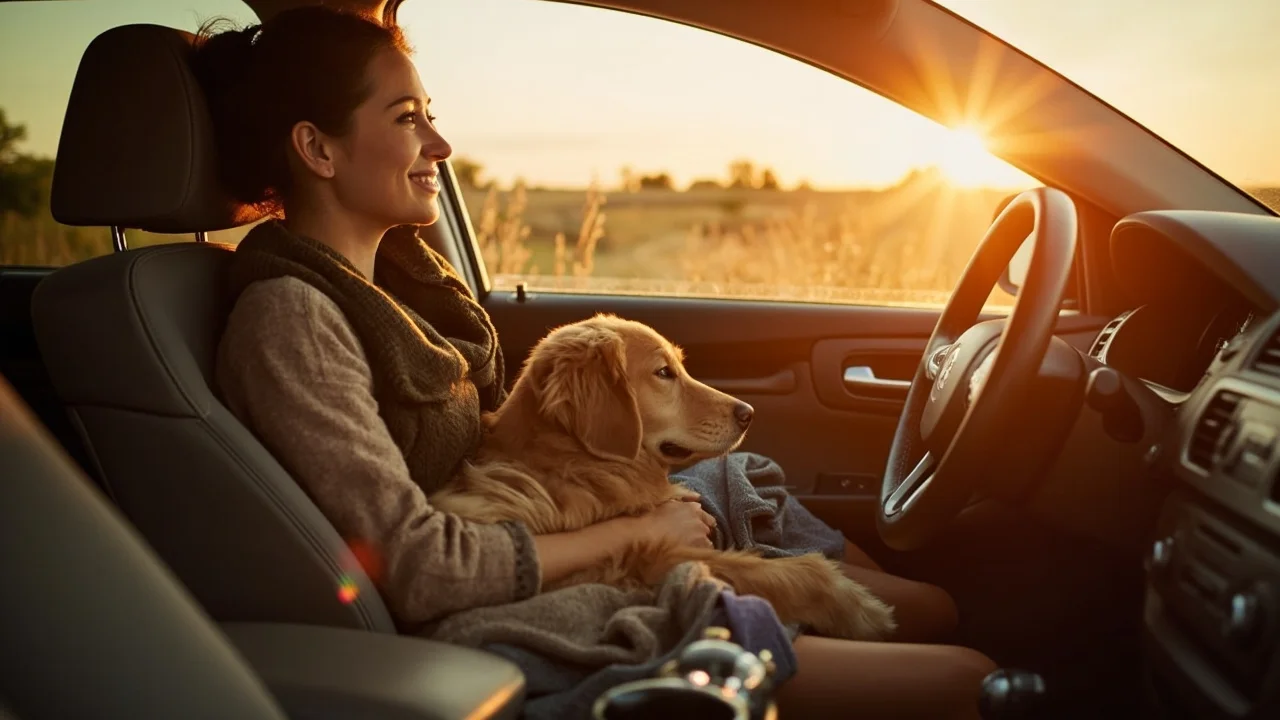


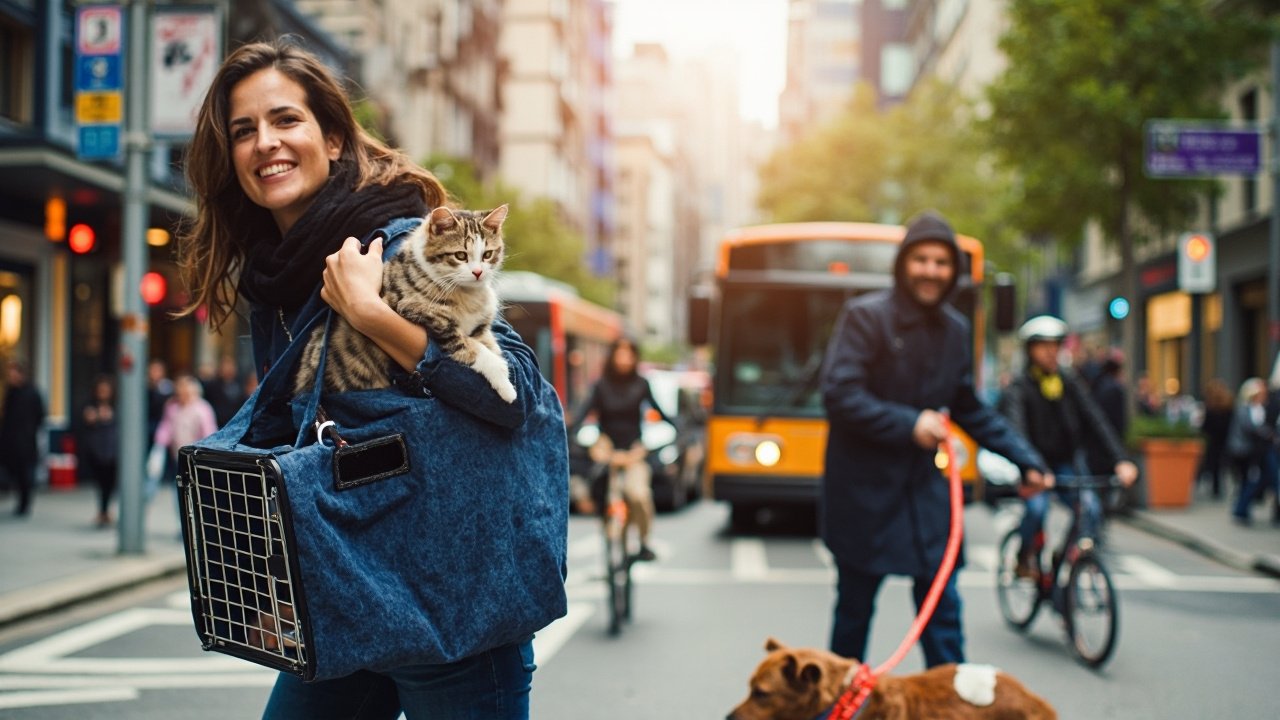

One thought on “Como Acostumar Seu Pet a Viagens Longas: Técnicas e Dicas para Evitar Enjoos.”